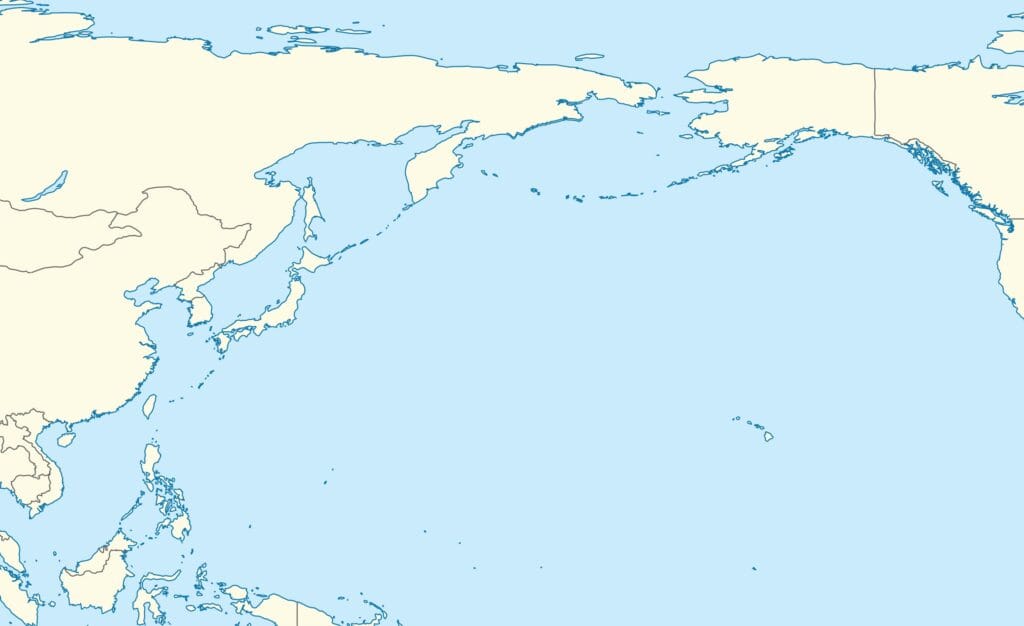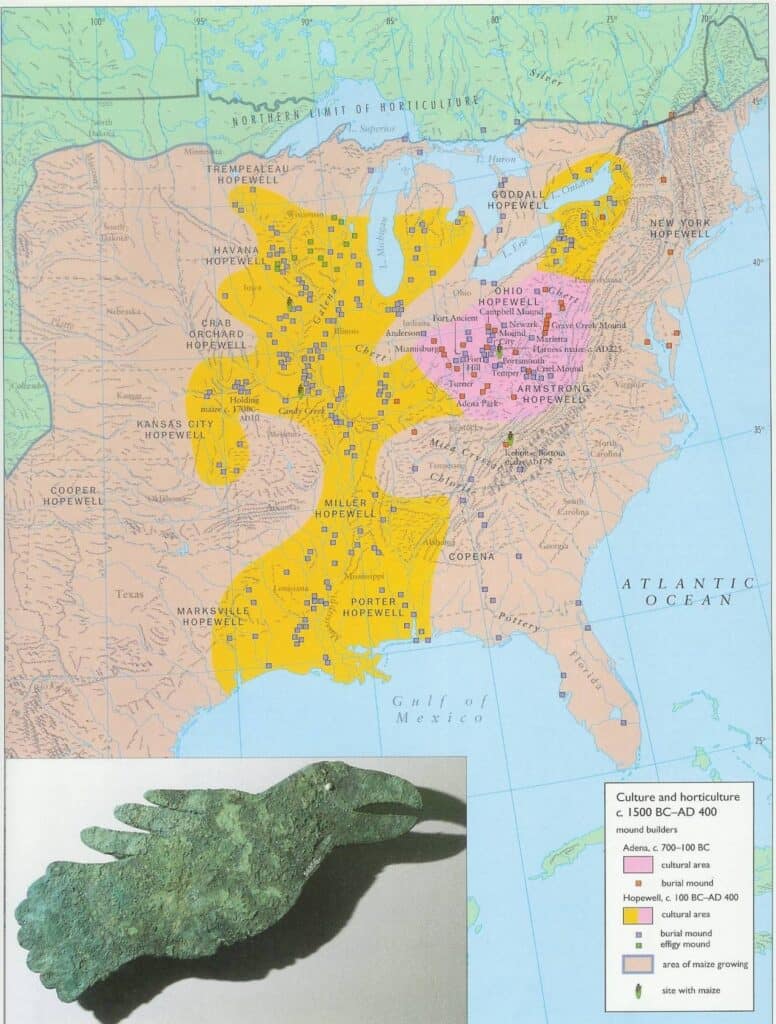Table of Contents
To these broad valleys were to come, in later centuries, invading hordes in boats, and over the far northern isthmus where now are only vestiges of its former existence, the Aleutian Islands. They came from Asia, then, as now, to a large extent the home of semi-barbarians, except where the sway of Suernis had extended a civilizing influence by sending out the tribes which, in a later day, were to occupy so large a niche in history under the name of the Semitic races. But the barbarians who went into Incalia, occupying the North American plains and lake regions—a future age should come which would find these hordes gone from the earth forever; and, later still, curious people digging from archaeological remains would say: “Here lived the mound builders.”
Frederick S. Oliver, 1883
This passage describes waves of ancient migrations to the broad valleys of North America, focusing on groups entering the continent from Asia via the northern route that once included a now-disappeared land bridge (the Aleutian Islands).



The migrants are characterized as coming from Asia, with some described as “semi-barbarians.” However, a civilizing influence from a place called “Suernis” had affected parts of Asia, leading to the emergence of groups later recognized as the Semitic races.
The passage then describes a group of “barbarians” who settled in North America, specifically in the plains and lake regions (possibly the ancestors of the Indigenous cultures there). The author foresees a future when these groups have vanished and archaeologists of later civilizations uncover their remains, labeling them as “mound builders” due to the structures they left behind.
The migrations described in the passage align with the period around 12,000 years ago when Asian groups crossed into North America, most likely via the Bering Land Bridge (a now-submerged strip of land between Asia and North America). This period coincides with the end of the last Ice Age, when sea levels were lower, making such migrations possible.
The “mound builders” reference could indicate that later Native American cultures constructed mounds. However, it is believed that these cultures, like the Mississippian civilization, appeared much later (around 2,000–3,000 years ago).
Incalia
Based on the context provided in the passage, “Incalia” appears to refer to a region in North America, specifically the plains and lake regions occupied by early migrating peoples from Asia. The passage mentions that future generations would find the remnants of these peoples and label them as “mound builders,” which aligns with ancient Native American cultures known for constructing mounds across the central and eastern parts of what is now the United States.
Here are some key points to help place “Incalia”:
- Geographical Context: The reference to the “North American plains and lake regions” points to areas such as the Great Plains and the Great Lakes region. This includes parts of the Midwest, stretching from the Mississippi River Valley to the Ohio River Valley.
- Cultural Reference: The term “mound builders” is historically associated with several Native American cultures, such as the Adena, Hopewell, and Mississippian cultures. These societies flourished in the regions mentioned above and are known for their earthwork mounds used for ceremonial, religious, and burial purposes.
- Historical Migrations: The passage describes migrations from Asia into North America via a northern route, possibly alluding to the Bering Land Bridge or the Aleutian Islands chain. This migration led to the settlement of various indigenous cultures throughout the continent.
- Interpretation of “Incalia”: While “Incalia” is not a standard historical or geographical term, it seems to be a constructed or archaic name used by the author to describe this region. The name may be inspired by “Inca,” but given the context, it is applied to North American settings rather than South American ones.

In summary, ancient “Incalia” can be placed in the central and eastern regions of North America, encompassing the plains and lake areas where the mound-building cultures once thrived. This would include modern-day states in the U.S. such as Ohio, Illinois, Mississippi, and others along the Mississippi River and around the Great Lakes.
